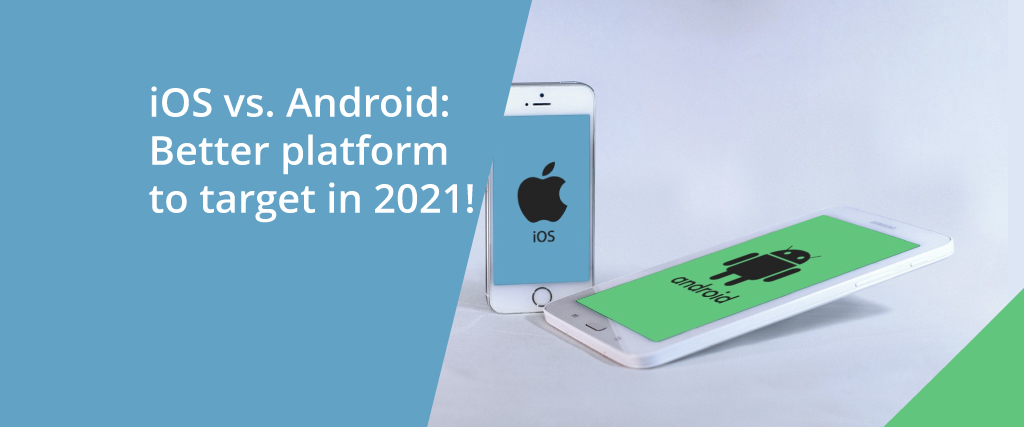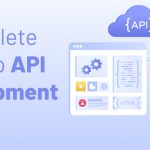iOS vs Android: You’re not alone if you’ve decided that creating a mobile app is the correct solution for your brand or business. For all kinds of companies aiming to engage their clients and increase their market share, smartphone applications have become an important business platform.
Although enterprises now have the choice of creating a progressive web app (PWA) for iOS, Android, Universal Windows Platform (UWP) or having a platform-agnostic, iOS vs Android app development is by far the most prevalent factor. So, how do you select the platform on which to first create your mobile app?
Above all, for their business app growth, the Android platform and iOS platform are a prime selection. Speaking of these two platforms, they have led the market for smartphone device growth by far more than their peers.
The discussions about which platform is the right for business mobile apps, though, are never-ending. There is a continuing fight between the growth of iOS and Android.
Understand your needs and decide what fits them the best, by going through this step-by-step guide!
Step 1: Figure your revenue model out
The revenue created by mobile apps has grown more rapidly. Therefore, to be at the top of the hierarchy, the correct revenue model for corporations is crucial and important. They both have their revenue model for the iOS platform and Android platforms.
Google and Apple use the iOS vs Android revenue models to reflect their approaches. The number of paying applications in ios is the explanation for creating more sales where a larger proportion of ad-supported apps are supported by Android in comparison.
Step 2: Survey the User Loyalty – iOS vs Android
Another aspect that is important to examine when contrasting Android vs. iOS growth is the commitment of consumers to their company.
92 percent of iPhone users, for instance, say they will not purchase smartphones from another maker. In comparison, for Android devices, it’s not the same.
Step 3: Demographics
An imperative decision to make is the location you want to reach for your proposed plan. As a result, the most popular site in that particular field must be considered so that the number of users will be protected.
Although iOS consumers have higher incomes, higher education levels, and can spend more on the service, Android has the greatest share of platforms focused on lower incomes and developing countries. This doesn’t mean that there are no Android phones for those with higher salaries.
Step 4: Fragmentation – iOS vs Android
Fragmentation is the process that happens when an older version of the OS is run by some percentage of smartphone users when other users are running a newer version.
For software developers who have to build the same program for a different version of the OS on the same platform, fragmentation may be a concern.
There are hundreds of applications that use Android, making the instability of the system worse for Android. Though there are small numbers of iOS-supporting devices in contrast, following the strict guidelines about how to communicate with each other.
Through producing its hardware and software on its own, Apple has full control of its software and products. Due to spending in design resizing and testing expenditures, iPhone production is cheaper.
Step 5: Design Guidelines
Google’s simpler rules mean that Android developers have to work hard to keep up. As a consequence of Android coming to the fore, Google offers more feedback and documents for material design.
If the architecture of iOS is less well defined, the use of negative spaces, large images, and transitions is normally involved.
Step 6: Choosing between iPad vs. Tablet apps – iOS vs Android
It is a fact, especially for business users, that iOS dominates the tablet market. It’s common for an individual with an Android smartphone to use an iPad as a tablet.
Android tablets for corporations are not professionally used. To find a tablet in a conference room, you would have to search hard.
Step 7: Determining the budgets (Time and Finance)
The production time is nearly the same for the iOS platform and the Android platform.
But, for Android, it takes more time to create the same program with various versions of the OS due to the heterogeneity of mobile devices.
Conversely, the operating systems are entirely managed by Apple on the iOS platform, so there is no question of fragmentation. Consequently, the cost of developing Android is greater than the development of iOS.
Overall, the aforementioned things should be viewed for organizations to realize the pros and cons of Android vs. iOS.Still uncertain as to which medium to choose?
Feel free to drop us any questions related to the development of iOS or Android applications. With our knowledge and skills in the creation of mobile applications, we are free to support.
Read More:
- ANDROID OR IOS – WHICH ONE HAS THE TECHNICAL SUPERIORITY?
- THE BEST 6 IOS APP DEVELOPMENT COMPANIES
- TOP 10 ANDROID APP DEVELOPMENT COMPANIES
























